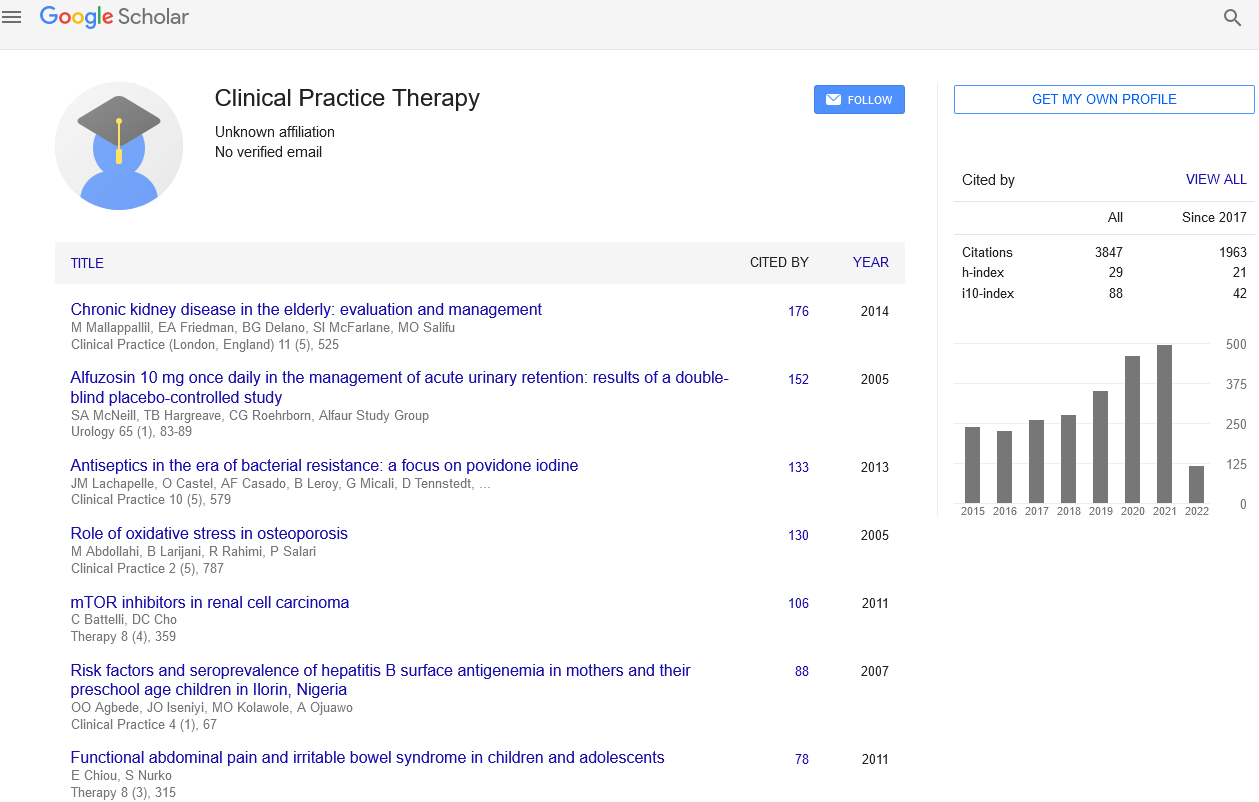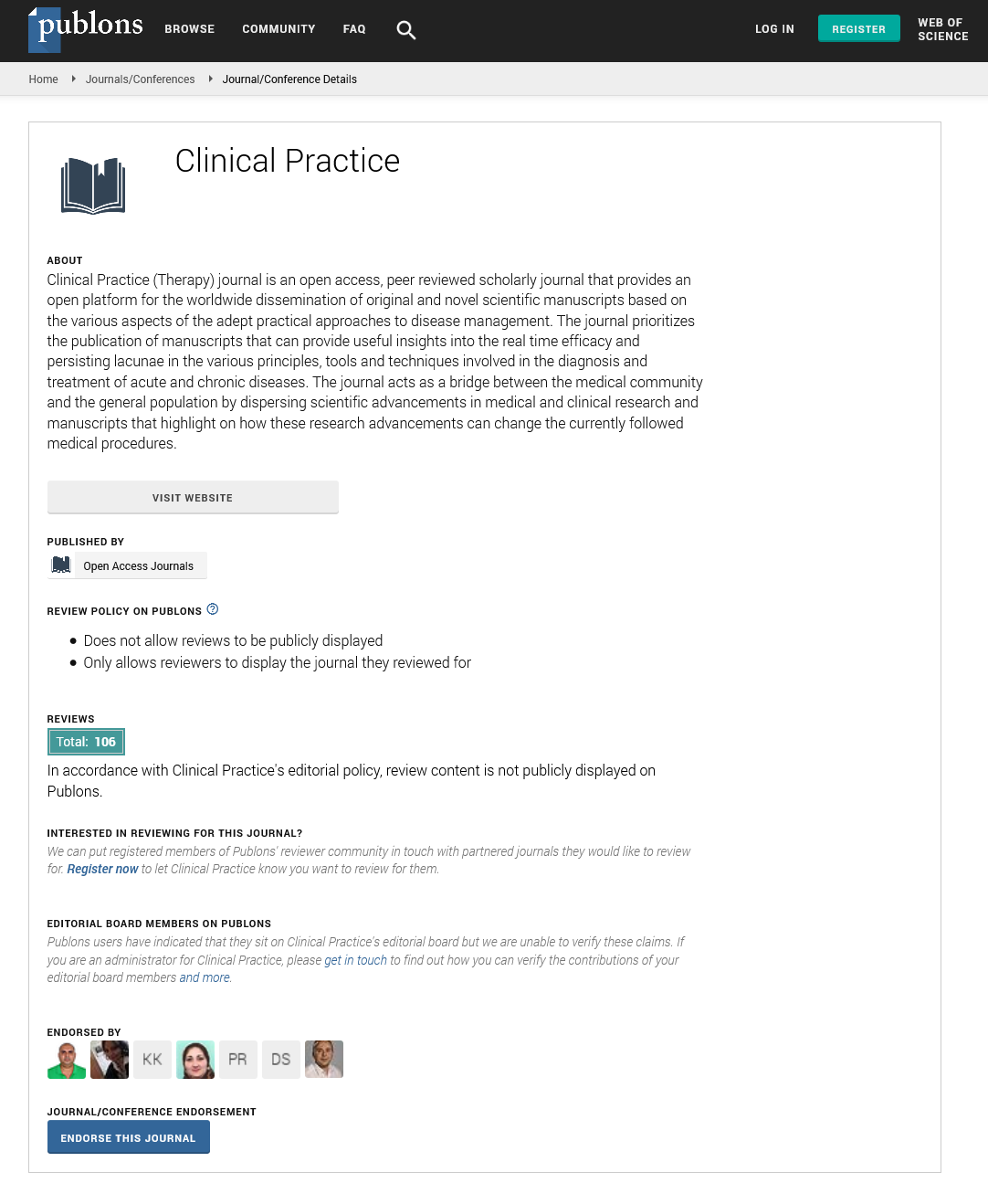Perspective - Clinical Practice (2025) Volume 22, Issue 1
Using
Rasha Awaw*
Department of Internal Medicine of Mediclinic Parkview Hospital, UAE
- *Corresponding Author:
- Rasha Awaw
Department of Internal Medicine of Mediclinic Parkview Hospital, UAE
E-mail: Rasha.Awaw@mediclinic.ae
Received: 01-Mar-2025, Manuscript No. fmcp- 25-158675; Editor assigned: 03-Mar-2025, Pre-QC No. fmcp-25-158675 (PQ); Reviewed: 17-Mar-2025, QC No. fmcp-25-158675; Revised: 21-Mar-2025, Manuscript No. fmcp- 25-158675 (R); Published: 28-Mar-2025, DOI: 10.37532/2044-9038.2025.22(1).1-3
Abstract
The field of lung disease research has long relied on traditional animal models and in vitro systems to investigate human pulmonary pathophysiology. However, these models often fail to capture the complexity of human lung function and disease. Recent advancements in microfluidic technology have led to the development of the “lung-on-a-chip” model, a novel in vitro system that mimics the physiological environment of human lungs. This opinion article explores the potential of lung-on-a-chip technology to revolutionize the study of human breathing, offering new insights into lung disease mechanisms, drug testing, and therapeutic development.
Keywords
Lung-on-a-chip • Human Breathing • Pulmonary Pathophysiology • Microfluidics • Drug Testing • Lung Disease • In Vitro Models • Respiratory Research
Introduction
The human respiratory system is a complex network of tissues and organs that facilitates the exchange of gases essential for life. Understanding the pathophysiology of human breathing is critical for diagnosing and treating various pulmonary diseases such as asthma, chronic obstructive pulmonary disease (COPD), pneumonia, and pulmonary fibrosis. Traditionally, researchers have relied on animal models and cell cultures to study these conditions, but these models often fall short of replicating the true complexity of human lungs. In recent years, innovative "organ-on-a-chip" technologies have emerged as a promising alternative to traditional models. Among these, the "lung-on-a-chip" system has shown great potential in simulating the dynamic environment of human lungs. Using microfluidic technology, this model integrates living human cells in a controlled microenvironment, allowing for the reproduction of physiological breathing patterns and the study of lung disease mechanisms in ways that were previously unattainable. This article examines the potential of lung-on-a-chip technology to offer valuable insights into human lung function and disease, providing a platform for innovative research in respiratory medicine [1-3].
Advantages of lung-on-a-chip technology
Human-relevant models:
Traditional animal models, while useful, are not always directly translatable to human diseases due to species differences in lung structure, function, and immune response. Lung-on-a-chip systems, on the other hand, are constructed using human cells, which provides a more accurate representation of human respiratory processes. By mimicking the behavior of the human lung at a cellular level, lung-on-a-chip models offer a significant advantage in understanding the pathophysiology of human breathing.
Simulating respiratory mechanics:
One of the most significant breakthroughs of lung-on-a-chip technology is its ability to simulate the mechanical properties of the lung, such as lung stretch and alveolar pressure, during breathing. This allows researchers to study the dynamic interactions between lung tissue and air, providing insights into how the lungs respond to various stimuli such as infections, allergens, or pollutants. The system can even replicate the movement of mucus and the contraction of smooth muscle, which are vital to understanding respiratory diseases like asthma and COPD.
Drug screening and personalized medicine:
Lung-on-a-chip technology offers a valuable tool for testing new drug therapies in a more controlled and human-relevant setting. The chip's ability to replicate lung conditions and responses to various substances allows researchers to screen potential medications and treatments more efficiently. Furthermore, lung-on-a-chip systems can be personalized by incorporating patient-specific cells, enabling the development of targeted therapies and improving the likelihood of successful treatments [4-6].
Studying disease mechanisms:
Lung diseases are often characterized by complex interactions between various cell types, including epithelial cells, endothelial cells, immune cells, and fibroblasts. Lung-on-a-chip models can integrate these different cell types in a way that traditional models cannot. By studying the interactions within the chip, researchers can uncover novel insights into the pathophysiology of diseases like asthma, fibrosis, and lung cancer. The model allows for real-time observation of cellular responses to stressors, providing a dynamic understanding of disease progression.
Challenges and limitations
Complexity of reproducing full lung function:
While lung-on-a-chip models can mimic key aspects of lung function, they do not fully replicate the entire complexity of the human lung. The lungs consist of various structural components, including airways, blood vessels, and alveoli, each of which plays a vital role in respiratory function. Current lung-on-a-chip models primarily focus on the alveolar-capillary interface and may not capture the full range of physiological functions such as gas exchange, immune responses, or the effects of systemic circulation.
Scalability and cost:
Despite the promise of lung-on-a-chip technology, its widespread adoption is currently limited by the scalability of the models and the cost of production. The chips require precise fabrication and maintenance, which can be resource-intensive. Moreover, the integration of human cells, particularly primary cells or stem cells, adds another layer of complexity and cost. As the technology continues to evolve, efforts to reduce costs and improve scalability will be crucial to making it accessible for widespread use in research and clinical settings.
Integration with other organ systems:
The lung does not function in isolation but interacts with other organs such as the heart, liver, and kidneys. While lung-on-a-chip models offer great promise in simulating lung function, they often lack integration with these other organ systems. The development of multi-organ-on-a-chip platforms could provide a more holistic understanding of how lung disease affects the entire body and improve the accuracy of preclinical drug testing [7-10].
Conclusion
Lung-on-a-chip technology is a groundbreaking advancement that holds great promise for revolutionizing the way researchers study human breathing and pulmonary diseases. By providing a more accurate, human-relevant platform, this technology offers significant advantages over traditional models, particularly in its ability to replicate respiratory mechanics and disease mechanisms in a dynamic environment. While challenges remain, the potential of lung-on-a-chip systems to advance our understanding of lung diseases, facilitate drug discovery, and enable personalized medicine is undeniable. As the technology continues to mature, it is poised to play a pivotal role in the future of respiratory research and healthcare.
References
- Jackson, Peter. The multiple ontologies of freshness in the UK and Portuguese agri food sectors. Trans Inst Br Geogr. 44, 79-93 (2019).
- Makam AN, Nguyen OK. An Evidence-Based Medicine Approach to Antihyperglycemic Therapy in Diabetes Mellitus to Overcome Overtreatment. Circulation. 135, 180-195 (2017).
- Chandalia M, Lutjohann D, von Bergmann K et al. Beneficial effects of high dietary fiber intake in patients with type 2 diabetes mellitus. N Engl J Med. 342, 1392-8 (2000).
- Gething MJ. Role and regulation of the ER chaperone BiP. Seminars in Cell and Developmental Biology. 10, 465-472 (1999).
- Schepers E, Meert N, Glorieux G et al. P-cresylsulphate, the main in vivo metabolite of p-cresol, activates leucocyte free radical production. Nephrol Dial Transplant. 22, 592-596 (2006).
- Ricci Z, Ronco C, Amico GD et al. Practice patterns in the management of acute renal failure in the critically ill patient: an international survey. Nephrol Dial Transplant. 21, 690-696 (2006).
- Chandalia M, Lutjohann D, von Bergmann K et al. Beneficial effects of high dietary fiber intake in patients with type 2 diabetes mellitus. N Engl J Med. 342, 1392-8 (2000).
- Gething MJ. Role and regulation of the ER chaperone BiP. Seminars in Cell and Developmental Biology. 10, 465-472 (1999).
- Schepers E, Meert N, Glorieux G et al. P-cresylsulphate, the main in vivo metabolite of p-cresol, activates leucocyte free radical production. Nephrol Dial Transplant. 22, 592-596 (2006).
- Ricci Z, Ronco C, Amico GD et al. Practice patterns in the management of acute renal failure in the critically ill patient: an international survey. Nephrol Dial Transplant. 21, 690-696 (2006).



